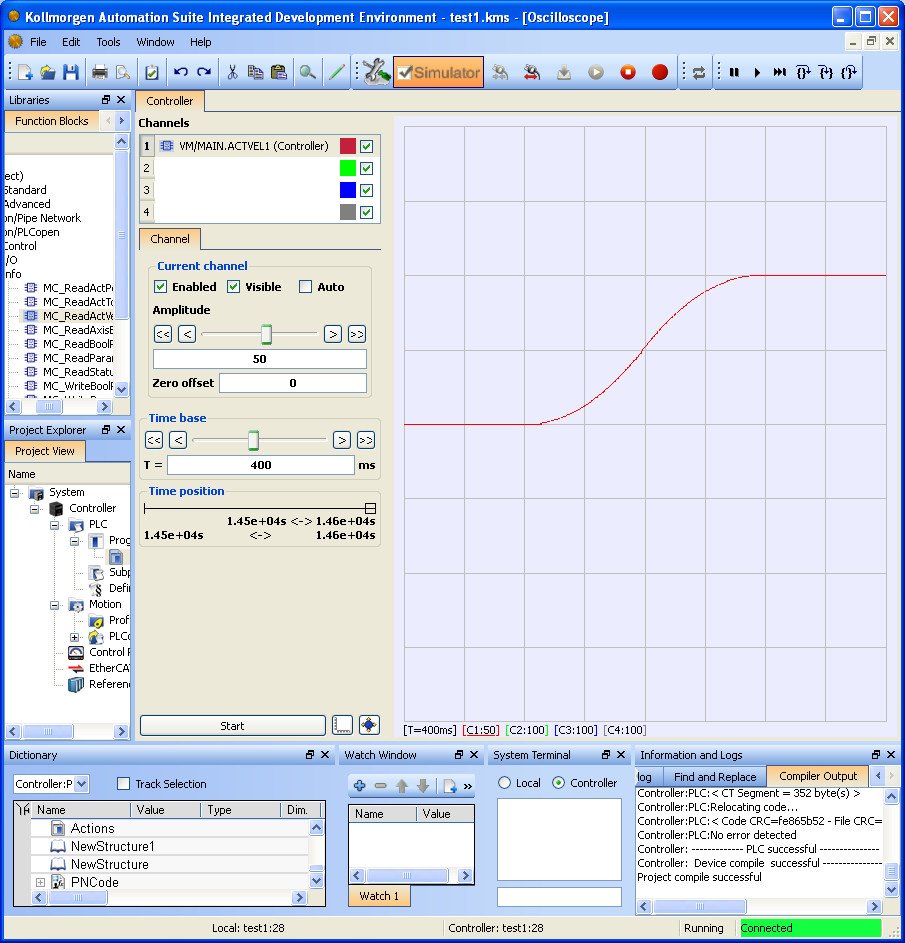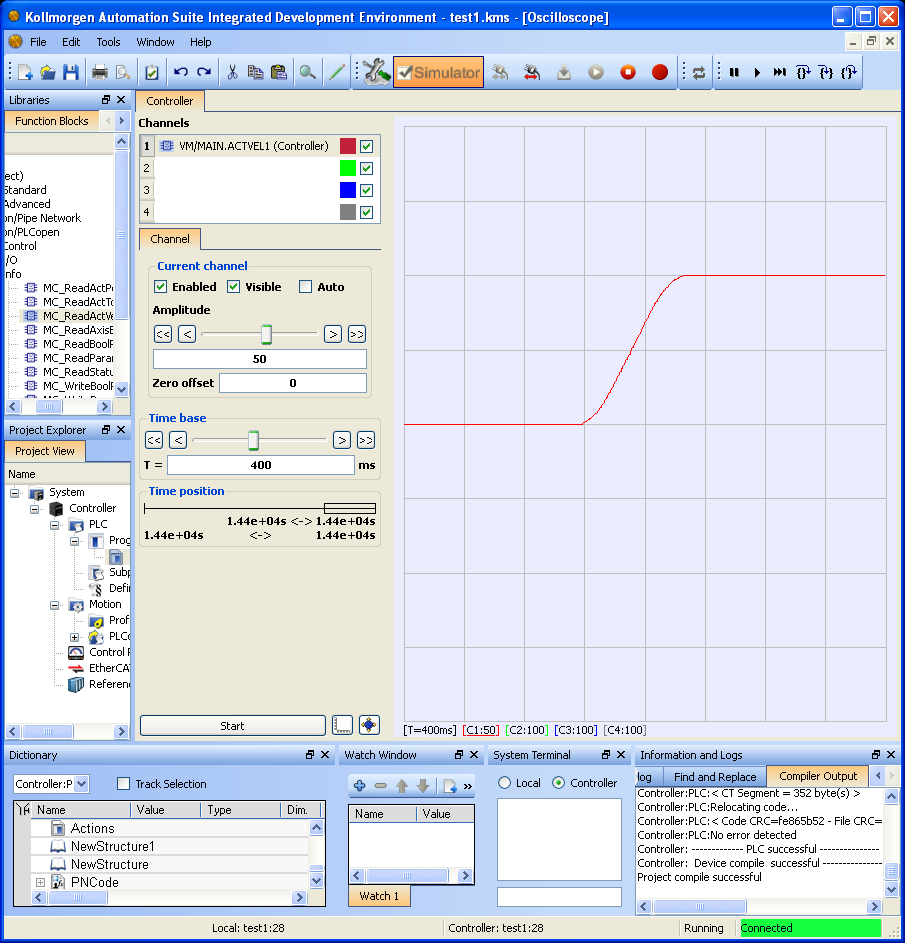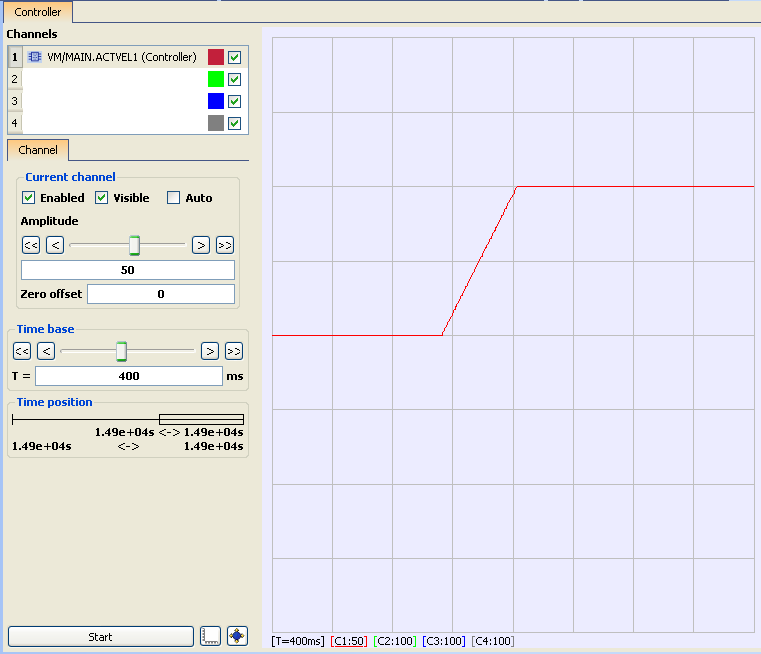S-curve and Trapezoidal Acceleration/Deceleration
S-curve
If the Jerk![]() In physics, jerk is the rate of change of acceleration; more precisely, the derivative of acceleration with respect to time input of a motion function block is non-zero, S-curve acceleration/deceleration is used. The Acceleration input specifies the maximum acceleration/deceleration reached during changes in velocity. The Deceleration input is unused. The Jerk input specifies the constant rate of change of acceleration and deceleration used to cause a smooth transition to and from maximum acceleration/deceleration.
In physics, jerk is the rate of change of acceleration; more precisely, the derivative of acceleration with respect to time input of a motion function block is non-zero, S-curve acceleration/deceleration is used. The Acceleration input specifies the maximum acceleration/deceleration reached during changes in velocity. The Deceleration input is unused. The Jerk input specifies the constant rate of change of acceleration and deceleration used to cause a smooth transition to and from maximum acceleration/deceleration.
The Small Jerk Acceleration below is a velocity plot of the acceleration of a move when Jerk is a small value. The smaller the Jerk value, the more gradual the rate of change of acceleration/deceleration when transitioning from one velocity to another.

Figure 5-45: Small Jerk Acceleration
The Large Jerk Acceleration below is a velocity plot of the acceleration of a move when Jerk is a large value. The larger the Jerk value, the more abrupt the rate of change of acceleration/deceleration when transitioning from one velocity to another.

Figure 5-46: Large Jerk Acceleration
Trapezoidal
If the Jerk input of a motion function block is zero, trapezoidal acceleration/deceleration is used. The Acceleration input specifies the linear acceleration rate. The Deceleration input specifies the linear deceleration rate.
The Trapezoidal Acceleration below is a velocity plot of the acceleration of a move when trapezoidal acceleration is used (Jerk = 0).








